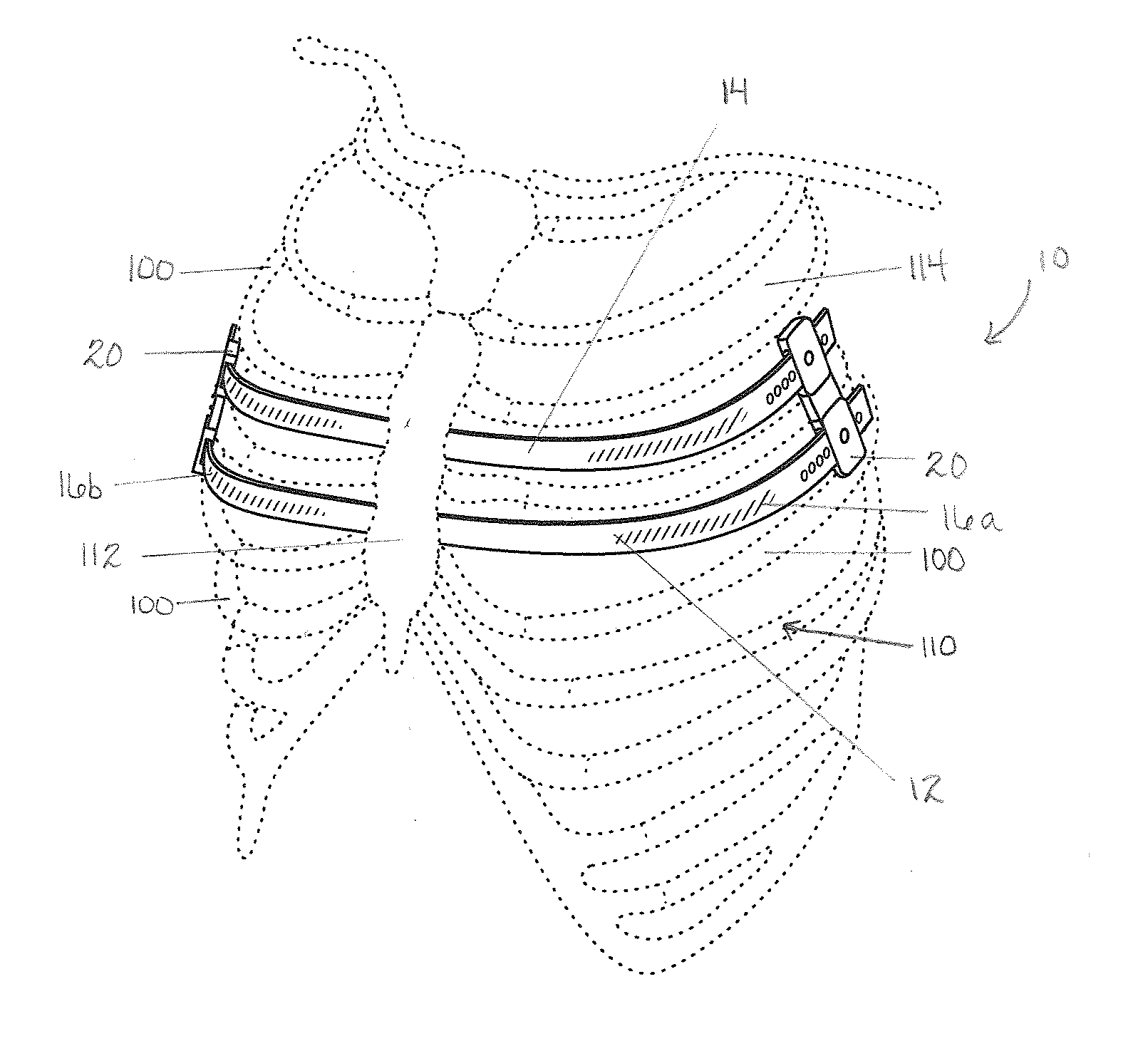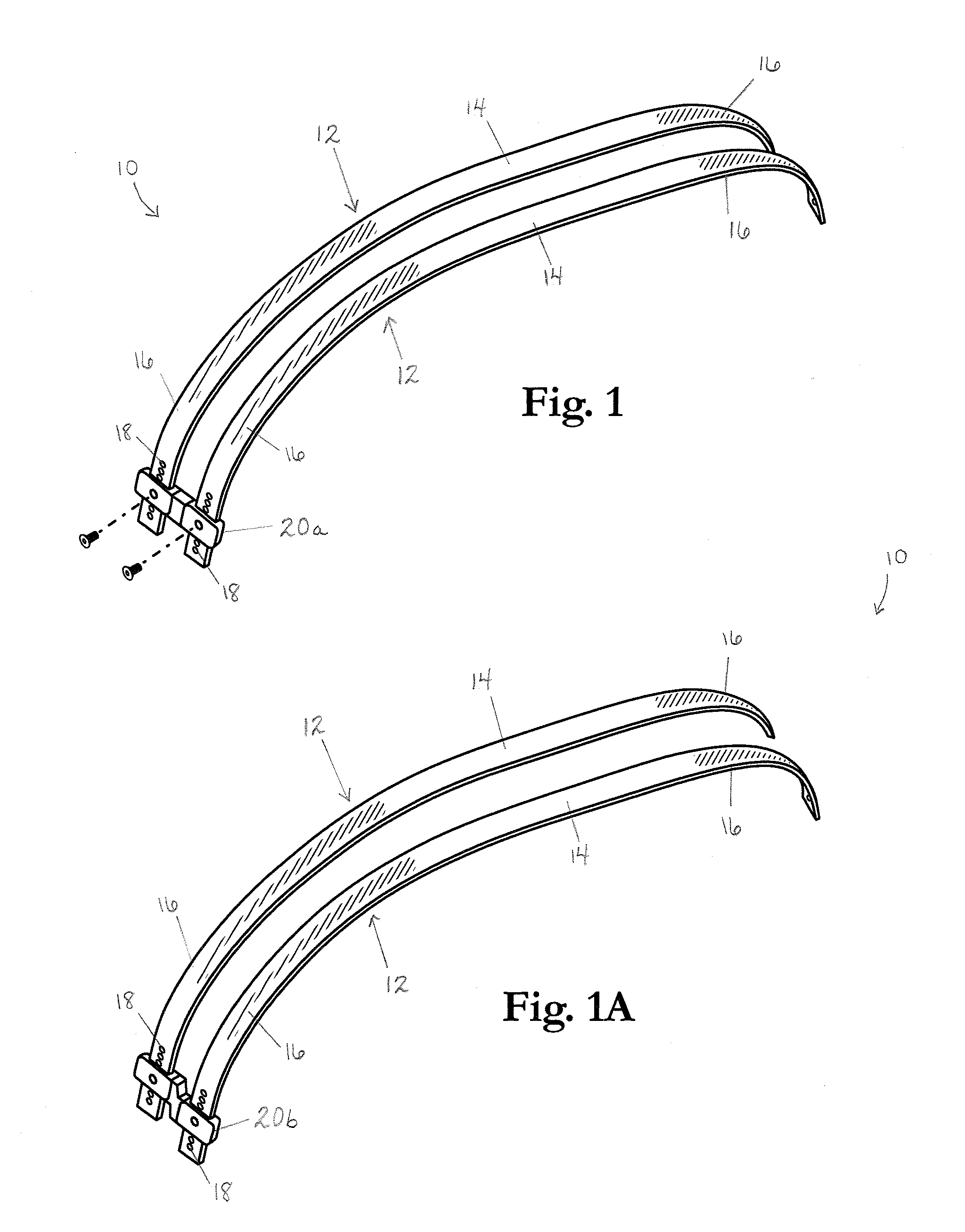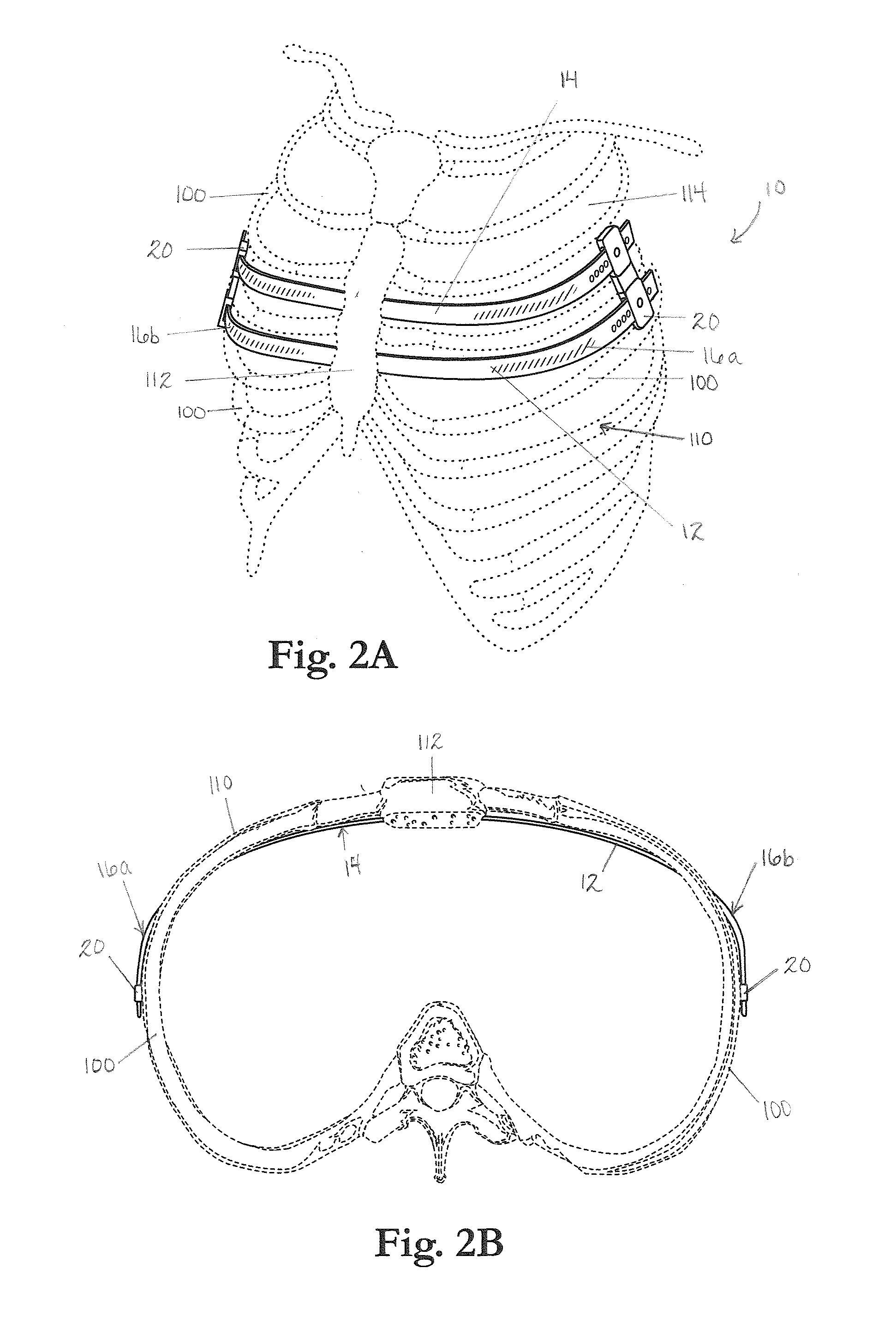Apparatus and method for treating pectus excavatum
a pectus and excavatum technology, applied in the field of medical devices, can solve the problems of two bars to be placed to fully correct the deformity, the bar has a tendency to flip out of position, and the pain of the patien
- Summary
- Abstract
- Description
- Claims
- Application Information
AI Technical Summary
Problems solved by technology
Method used
Image
Examples
Embodiment Construction
[0019]The novel features believed characteristic of the invention are set forth in the appended claims. The invention will best be understood by reference to the following detailed description of illustrated embodiments when read in conjunction with the accompanying drawings, wherein like reference numerals and symbols represent like elements.
[0020]Referring to FIGS. 1-7, an apparatus for treating pectus excavatum, hereinafter apparatus 10, and a related method are shown. In its simplest form, the apparatus 10 comprises a pectus bar stabilizer 20 for securing at least two pectus bars 12 in place within the chest cavity of a patient.
[0021]FIGS. 1 and 1A show two pectus bars 12 secured with a pectus bar stabilizer 20. FIG. 1 shows one embodiment of the pectus bar stabilizer 20a (referred to generally as pectus bar stabilizer 20) and FIG. 1A shows another embodiment of the pectus bar stabilizer 20b (referred to generally as pectus bar stabilizer 20). The pectus bars 12 are convex and e...
PUM
 Login to View More
Login to View More Abstract
Description
Claims
Application Information
 Login to View More
Login to View More - R&D
- Intellectual Property
- Life Sciences
- Materials
- Tech Scout
- Unparalleled Data Quality
- Higher Quality Content
- 60% Fewer Hallucinations
Browse by: Latest US Patents, China's latest patents, Technical Efficacy Thesaurus, Application Domain, Technology Topic, Popular Technical Reports.
© 2025 PatSnap. All rights reserved.Legal|Privacy policy|Modern Slavery Act Transparency Statement|Sitemap|About US| Contact US: help@patsnap.com



